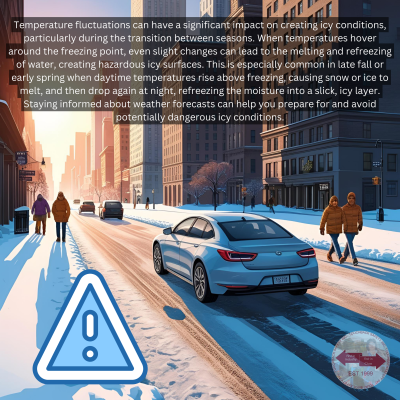Temperature fluctuations can have a significant impact on creating icy conditions, particularly during the transition between seasons. When temperatures hover around the freezing point, even slight changes can lead to the melting and refreezing of water, creating hazardous icy surfaces. This is especially common in late fall or early spring when daytime temperatures rise above freezing, causing snow or ice to melt, and then drop again at night, refreezing the moisture into a slick, icy layer. Staying informed about weather forecasts can help you prepare for and avoid potentially dangerous icy conditions.
Temperature changes can significantly impact road conditions, especially when they lead to icy surfaces. As temperatures drop below freezing, any moisture on roads, such as rain, melted snow, or dew, can freeze, creating a thin layer of ice known as black ice. This type of ice is particularly dangerous because it’s nearly invisible and can catch drivers off guard, leading to accidents. The transition from warm to cold weather can also cause water to seep into cracks in the pavement, which then expands when frozen, exacerbating road damage. It’s crucial for drivers to remain vigilant during temperature fluctuations, reducing speed and increasing following distances to navigate safely. Temperature changes can significantly impact walking conditions. This can create hazardous conditions for pedestrians, as the ice is difficult to spot and can lead to slips and falls. It’s crucial to exercise caution by wearing shoes with good traction and walking with shorter, more deliberate steps to maintain balance.

